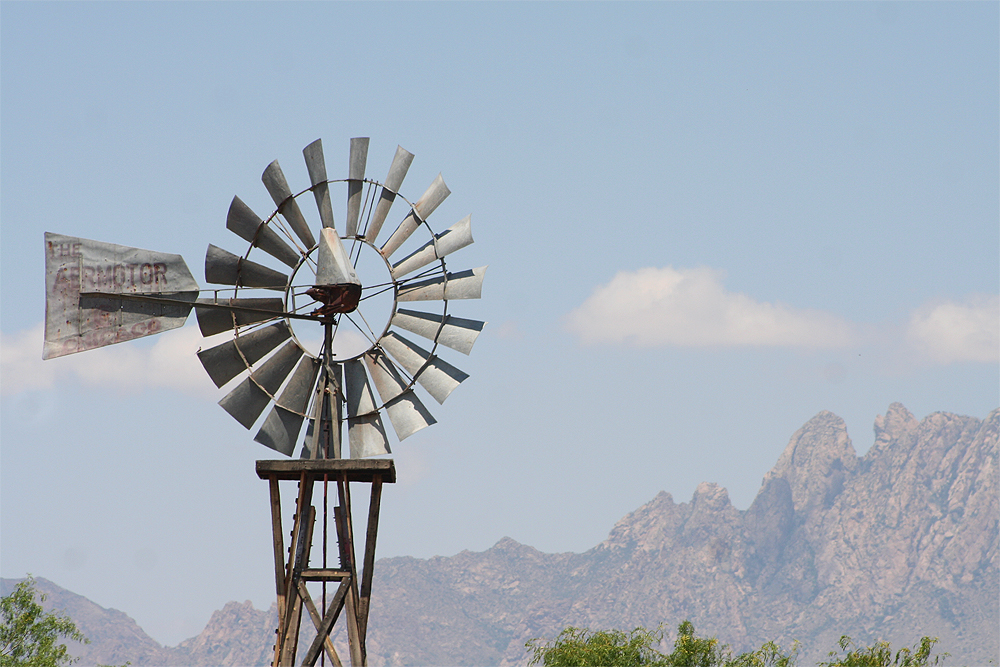A few rainy seasons won’t stop coming drought
Scientists expect greenhouse gases to cause a historic dry period in the Great Plains this century
Ryan F. Mandelbaum • December 29, 2015

Despite recent rains from El Niño, New Mexico is in one of its driest periods since the 1950s. [Image Credit: Ralph Moran
After a punishing five-year drought, the 2015 rains have relieved farmers in the southwestern Great Plains. But new climate data suggest the worst is yet to come.
Farmers will need to prepare for even more erosion and less water in the future. A group of scientists predicted that man-made climate change will bring a historic drought to the Great Plains in the second half of the 21st century. They published their results in the journal Science Advances in early 2015. The recent rains were brought by El Niño, a weather pattern caused by warming Pacific Ocean waters, but these short-term weather changes are different from the long-term drying climate, which can still be punctuated by rainy periods.
The scientists based their prediction on a new climate model that combines current observations with 1000 years of past climate data based on tree rings. When scientists look at tree stumps, wider rings translate to rainy years, while thinner rings mean less rain fell. Benjamin Cook, a NASA scientist who worked on the study, compared the tree ring analysis to computer models and showed that man-made emissions of carbon dioxide and other greenhouse gases will cause 20-30 consecutive years of drought this century, he said.
Despite the many factors that go into climate modeling, like El Niño or shifting snow patterns in the Rocky Mountains, Cook is confident in the accuracy of the predictions. While rain will still fall on the plains, the overall climate will continue to dry, like a struggling baseball player who may continue to hit home runs on his descent towards retirement, he said. His results further confirm other studies published in the last ten years.
A mega-drought in a place with a lot of farming wouldn’t just deprive crops of water, but would spark a dangerous chain of events, beginning with increased soil loss. Some farming practices can make the erosion much worse, according to a 2012 study. For example, tilling, or turning the earth over after each harvest, saps the previously unexposed soil of its moisture as it bakes under the hot sun. Farming practices like tilling are the chief cause of soil loss in the U.S., according to Paul Ginoux, the chief author of the 2012 study and a climatologist at the National Oceanic and Atmospheric Administration.
Farmers have dealt with large-scale droughts and soil erosion before. The Dust Bowl of the 1930s, during which severe soil loss and drought forced 300,000 people to move out of Oklahoma and nearby states, encouraged conservationists to develop better methods for dryland farming to prevent erosion. After the Dust Bowl, farmers began tilling the land less, left at least a third of the residue from past crops on top of the soil to keep in moisture, and selected crops like sorghum and wheat that require less water, said Steve Kadas, a conservationist in New Mexico.
However, a 20-year-long drought would put far more strain on Great Plains farmers, who can no longer rely on rain but must use water from the Ogallala aquifer, a large underground reservoir of saturated soil that supplies water to Nebraska and parts of Kansas, Oklahoma, New Mexico, Texas and Colorado. It’s no secret that the aquifer is running dry as more farmers tap into it, but the question is how much time it has left. One study predicts the Ogallala may lose 39 percent of its water in the next 50 years, on top of the 30 percent farmers have already used.
“Long term, I foresee the day when there will not be any irrigated agriculture in eastern New Mexico,” said Kenny Walker, a farmer and project manager for the New Mexico Association of Conservation Districts.
Eastern New Mexico’s farms are especially fragile; they’re located in an arid climate and currently rely heavily on the aquifer for irrigation, according to Walker.
Kadas and Walker represent local conservation districts, which the government set up after the Dust Bowl to teach farmers methods to manage their natural resources. But the conservation districts alone may not be enough to stop the impending drought. The only way to reduce drought effects would be to make deep cuts in greenhouse gas emissions now, said Cook. And past emissions have already put so much greenhouse gas into the atmosphere that completely avoiding some dry years is impossible.
New Mexico farmers have already noticed the drying effects of climate change.
“Some people have raised a crop and not have anything come up, and we’ve seen some increased erosion,” said Kadas. “That keeps me up at night.”